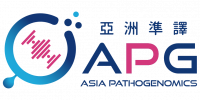
適用於局部感染
For Focal Infections
(40M)
感染症 & 常規檢驗困境
根據世界衛生組織 (WHO) 統計,感染性疾病在全球死因佔 25% 以上,尤其在敗血症、腦膜炎、肺炎、免疫力低下等族群,其死亡率更高。然而,這些族群以現有傳統病原檢驗方法,檢出率僅有 30~50%,且各有所限制。導致臨床醫師無法即早確認致病原,僅能以自身過往經歷或以經驗性抗生素治療,使感染重症病人無法在最短時間內獲得最佳的診斷與治療。有鑑現行檢驗困境,亞洲準譯 APG 提供科學解決方法 「百微解 APGseq - 感染病原基因定序檢測」!
百微解 APGseq
「簡單來說,如果說 PCR 是釣魚竿,mNGS 就是捕魚網!」
百微解 APGseq 是基於總體基因體次世代定序技術 (Metagenomic Next Generation Sequencing, mNGS) 的一項,全面、精準、快速的感染病原基因定序檢測服務。以高通量定序深度加上亞洲準譯 APG 獨有的病原資料庫,可突破傳統臨床檢測極限,一次性對病患檢體進行上萬種病原的定序分析。於72小時內提供檢驗報告,找出致病原,並協助臨床醫生進行診斷、擬定最佳治療方案。和常規檢驗最大差別為無須培養、無須假設、一次檢驗超過上萬種病原,是一項不基於培養的感染檢驗方式。「感染症是急性病!不像慢性病可以慢慢調整!」 百微解 APGseq 高效率的檢測服務,讓急 (病程進展快)、重(病況危及生命)、難(診斷困難) 感染病人,不錯失黃金治療時間,可第一時間得到最正確的診斷治療。
| 百 微 解 APGseq (mNGS) | 傳 統 臨 床 常 規 檢 測 | ||
|---|---|---|---|
| 全 面 |
一次檢測就可直接分析比對上萬跨物種病原體。 (細菌、真菌、病毒、寄生蟲) |
單 一 |
一次檢測僅能檢測限定範圍病原體, 不同總類病原需用不同檢測方式。 |
| 精 準 |
相較傳統檢測,可提升約 60%病原檢出率, 且在難以檢出特殊病原具有優勢。 |
影 響 |
傳統檢測檢出率僅約 30~50%, 且易受採檢時間、技巧、檢體量等影響。 |
| 快 速 |
檢驗報告於 3 個工作天內 (檢體抵達實驗室起算) 即可發出,輔助醫師即早確認感染病原。 |
緩 慢 |
各感染病原種類皆需要不同檢出時間:
|
每一種感染病原體都有其特殊的基因組成,百微解 APGseq 透過總體基因體次世代定序技術 (Metagenomic Next Generation Sequencing, mNGS) 進行病原體基因組成的解碼,將定序基因和資料庫中參考序列比對,找出和序列一致的參考序列,一次檢測即可鑑定出檢體樣本內多種病原體。 mNGS 檢測流程如下:
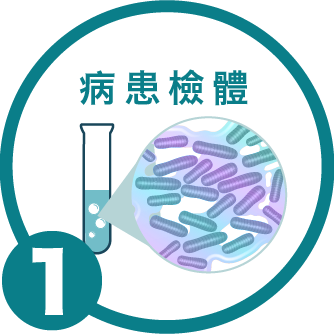 樣本採集
樣本採集
依照感染適應症,採集病人的對應適合檢體。收取檢體類型包含血液、肺泡灌洗液、組織等。
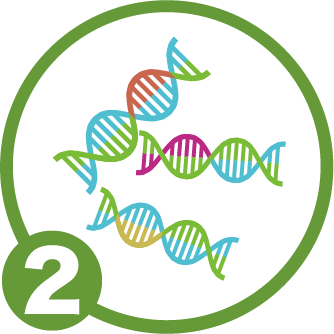 樣本處理
樣本處理
透過經驗證的萃取方式提取檢體內的 DNA/RNA,並針對檢體類型進行優化,製備可用於定序的樣本庫。檢測流程透過品質管控系統嚴格監控實驗品質。
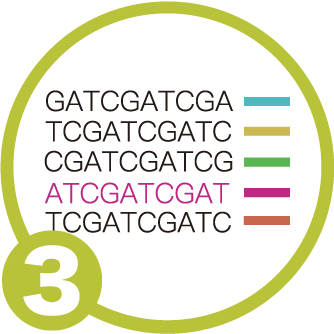 基因定序
基因定序
以 Shotgun 次世代定序技術,檢測檢體內所有基因組成並取得序列數據。透過大量同步進行的短序列片段定序,達成短時間高通量的基因解碼。
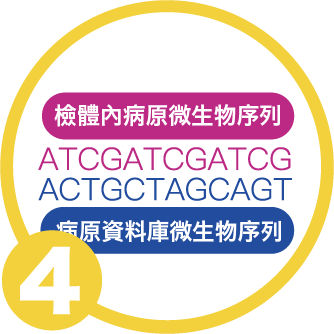 比對分析
比對分析
藉由獨有病原資料庫 (含上萬跨物種之病原序列資料) ,對定序完之序列數據進行比對分析。過程消除了定序常見的偏差來源,確保分析結果不受背景雜訊誤判,提高分析之特異性。
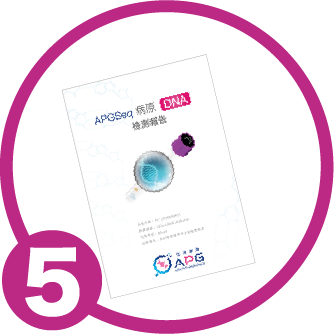 校閱報告
校閱報告
比對分析後的病原檢出結果將再由醫檢師校閱整理,最終發出檢驗報告給感染病人的主治醫師。